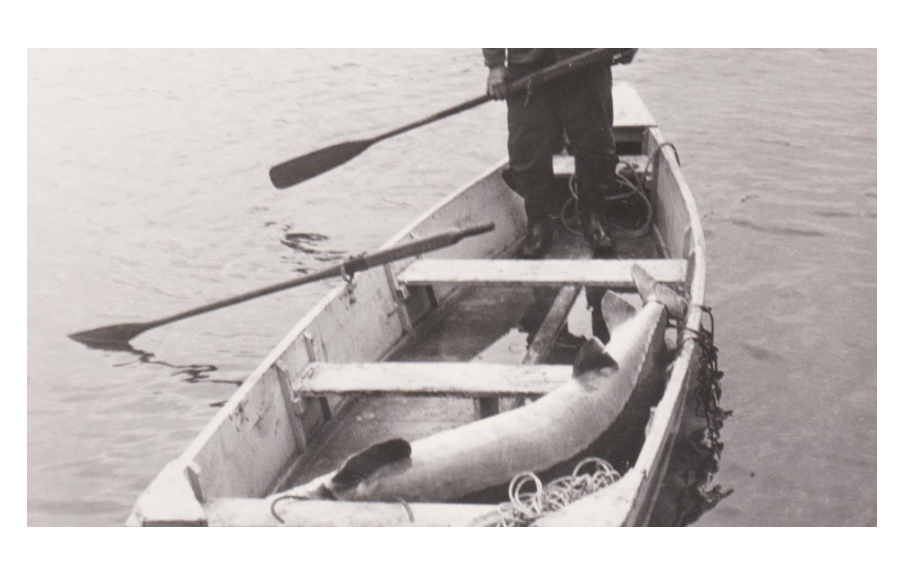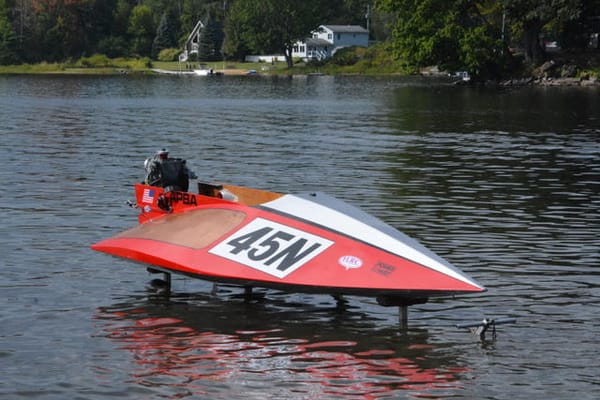Starting to Discover River Sturgeons
by: Ken Treusdell & Susan W. Smith
This all started over the holidays, with an email from Ken Truesdell. It read, "My name is Ken Truesdell – I was born in Ivy Lea during WW2 – my father was in the Navy and my mother from Nova Scotia. My father is 103 and living in Gananoque. I write to you as I am now living just west of Gan and interacting with both locals and recent transplants – and there is no awareness of the fishery (or even the fact that sturgeon stock are now quite plentiful again our area of the River)."
I thanked Ken and suggested that he was now sending both of us down a lovely new rabbit hole . . . Over the next few months, Ken and I will share our research with TI Life’s readers.
However, we do so with a caveat – we need your knowledge, your photographs, and your Sturgeon fish stories!
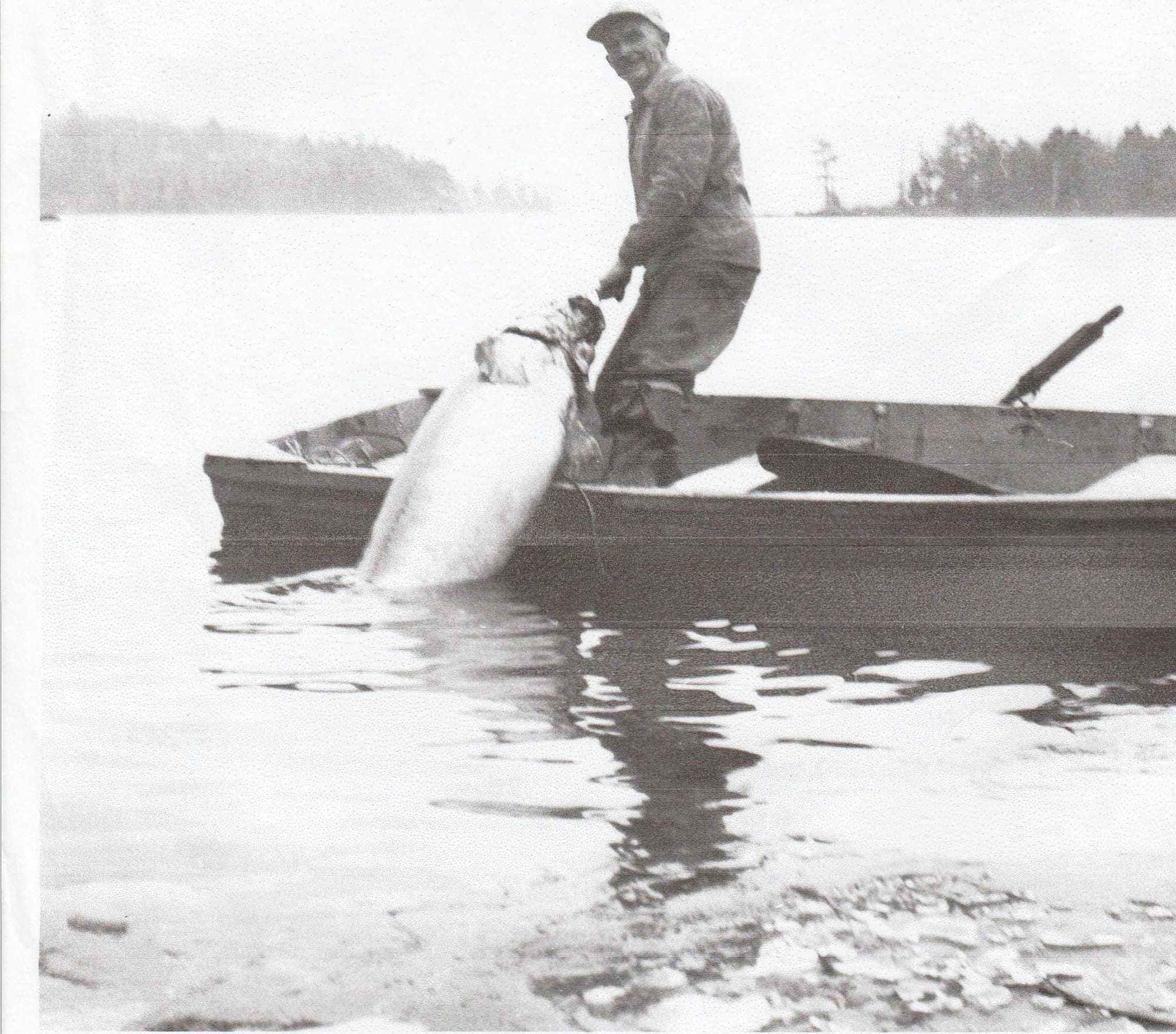
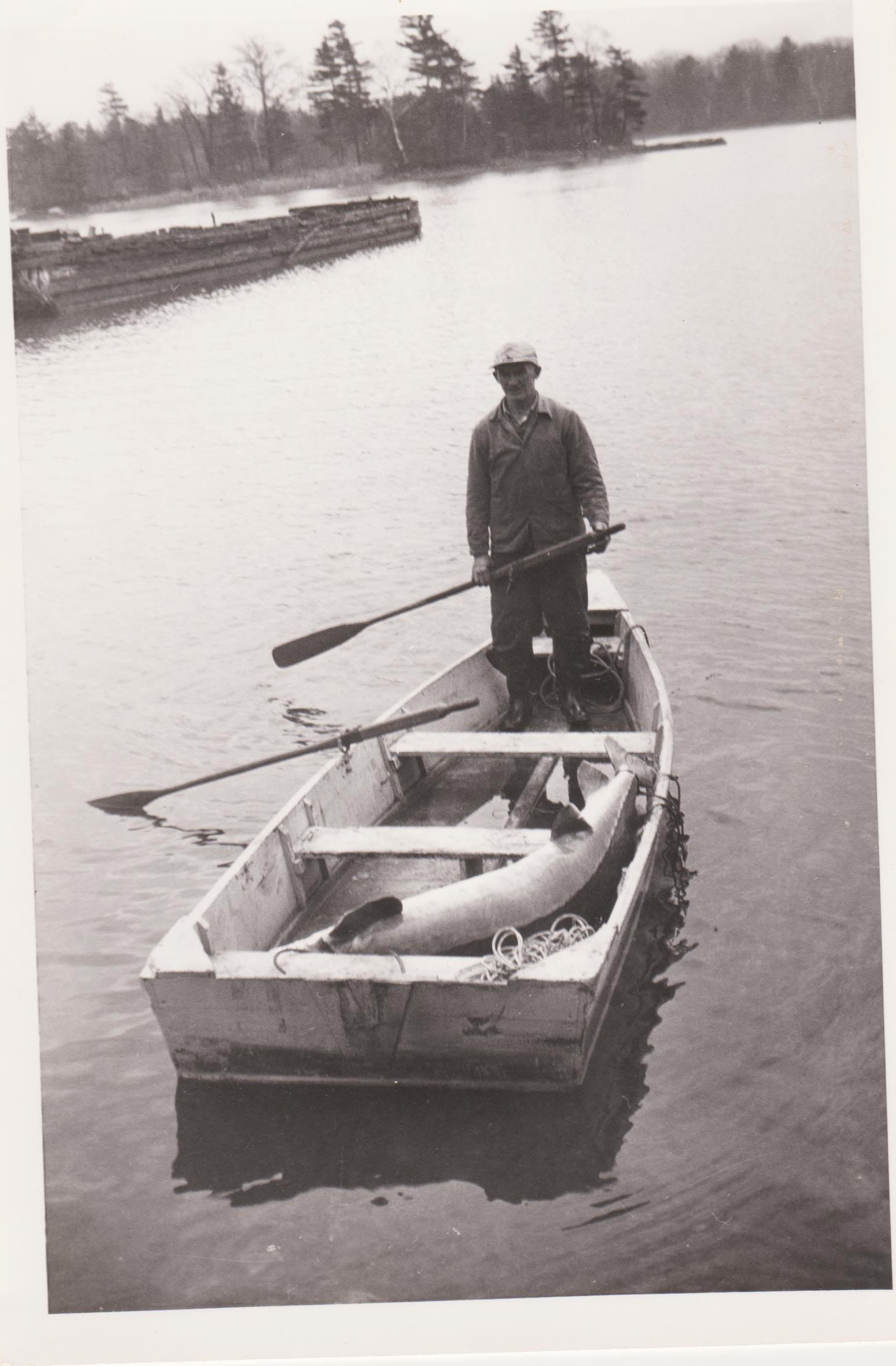
Fred Truesdell on a Sturgeon Run. [Photo courtesy Ken Truesdell, Jr.]
Ken Truesdell: What we know now:
My grandfather, Fred Truesdell, was a farmer, fisherman, and jack-of-all-trades. One of his many endeavours was commercial sturgeon fishing. He had a licensed territory stretching from the "bridge" to Leek Island and 40 Acres. His catch was shipped to New York City, where it was a mainstay on the menu at the Waldorf Astoria Hotel. George Boldt, of Boldt Castle fame, was the proprietor of the Waldorf and actively sought fish from the local fishermen to supply sturgeon fish eggs. Yes, those fish eggs are called Caviar. Boldt paid top dollar and was always seeking more product from both sides of the border.
My grandfather was permitted to keep his license and allotted area until he passed in 1968. In 1949, Fred actually caught the biggest fish known, at 237 lbs – 7 feet long, 42 inches in girth and with 10 pounds of caviar. Around 1960, he caught another one of similar size (210 lbs.). The biggest one took 1.5 hours to land and almost swamped his boat.
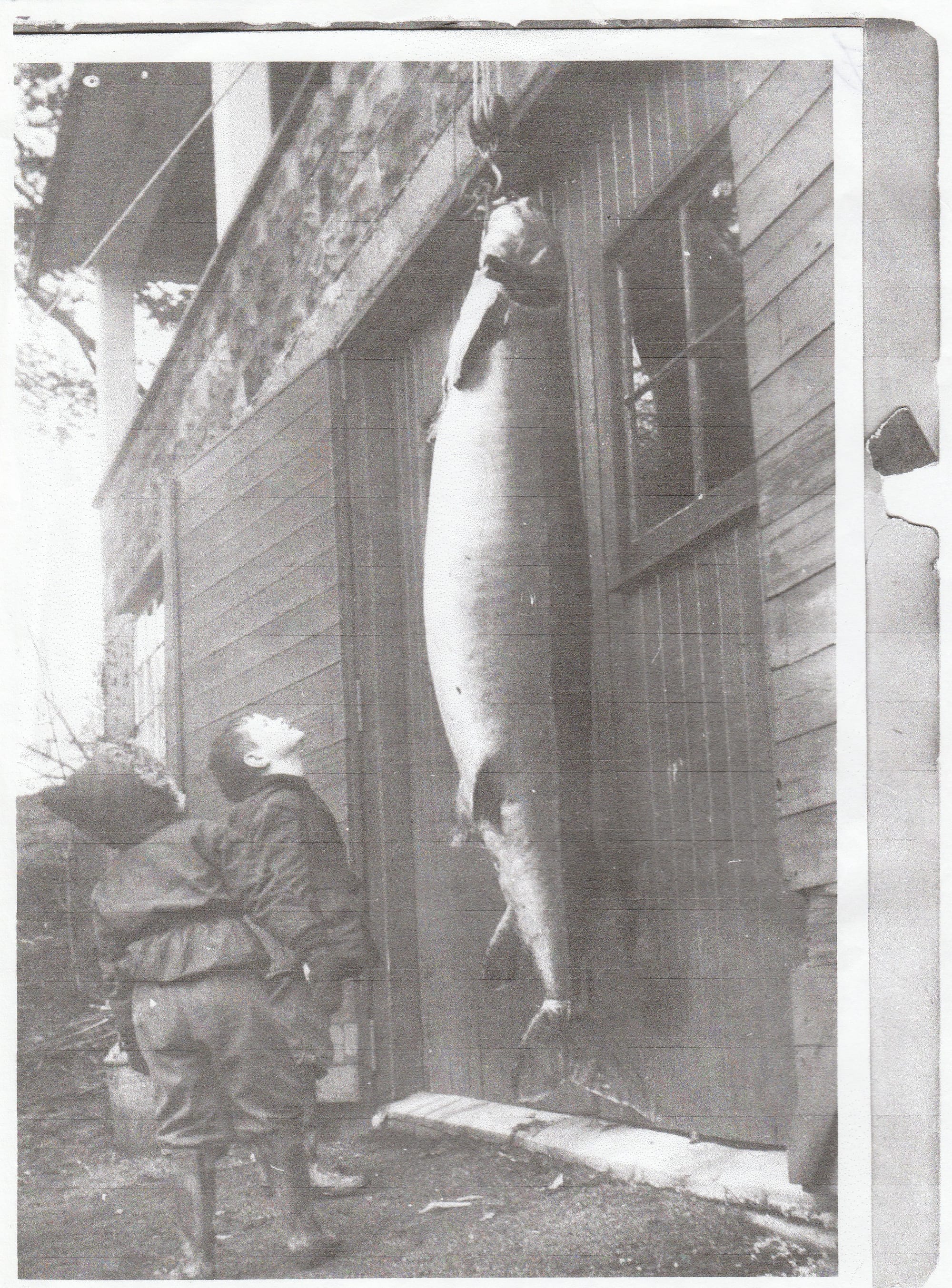
I can recall running the "lines" with my grandfather when I was about six years old. It was probably in November, we travelled to the channel near the US border just up river from Endymion Island in a 14 foot punt. We had a couple of buckets of small fish i.e. perch, sunfish, rock bass and were going to pick his 1/4 mile long line by grapple hook, re-bait the hooks with small pieces of these fish as sturgeon only ate "fresh pieces" and check for any catch. My grandfather could not put floating markers on his lines as they would be run by fish thieves. At this time, we did not use or even have lifejackets in the boat but my grandfather had his shotgun for any ducks that flew by and I remember his being a good shot and playing with a duck carcass on the trip home. No fish were on the line that time.
I should also mention another bit of his history, which was he farmed Ash Island for 40 years. He had sheep, cows, and two horses. The animals were ferried to the mainland in the fall and taken back out to the island in the spring.
Learning about Sturgeon
We found this YouTube produced in 2016 In fact, National Geographic photographers, David Doubilet and Jennifer Hayes, who live in Clayton are featured.
Saving the Sturgeon (And we filmed them SPAWNING!) YouTube, BlueWorldTV, Jan 25, 2016
More about Fred Truesdell by Shawn Thompson
One morning I remembered a special book in my library, River Rats, The People of the Thousand Islands, by Shawn Thompson, 1989. Sure enough, I found the story about Helen and Fred Truesdell in "Where the River Never Freezes."
Shawn interviewed Helen Truesdell who related several stories about Fred and his sturgeons;
"In the days when the giant sturgeon could still be fished from the River, Truesdell would lay a thousand-foot nightline and haul it up in the morning. In a good season, Truesdell might land eight or ten sturgeons weighting between eight-five and a hundred pounds. He shipped them to New York City, though family also kept the small ones to eat . . .”
Ironically, in the nineteenth century the sturgeon was thought a nuisance. It was used as fertilizer, sad ending to a long and dignified career. The sturgeon, which can live over forty years, has an ancient linage. It traces its ancestry back seventy million years. So there was Truesdell, a mild man of the River, against a breed of fish far older than the pharaohs of Egypt.
"He was a little man, but he was very strong," When Truesdell was seventy-nine he caught and pulled aboard by himself a one-hundred -and-sixty-five-pound sturgeon. No one told him he was too old to be hauling monstrous fish out of the deep. Still the one-hundred-and-sixty-five-pound sturgeon was not Truesdell's record. On December 15, 1949. . . he caught a two-hundred-and-thirty-seven pound sturgeon off Sheep Island. He only weighed one hundred and sixty pounds himself. [Page 86-88, River Rats, by Shawn Thompson, Published,1989]
What do you know?
Luckily Ken Truesdell, Sr., Fred's son, celebrated his 103th birthday this year and we will interview him in the coming weeks and share his stories.
But remember, we need your knowledge, your photographs and your Sturgeon fish stories so please contact us at info@thousandislandslife.com
By Ken Truesdell, Jr. and Susan W. Smith
Ken Truesdell, Jr. is retired and living back in Gananoque. He says he greatly appreciates a rich history his family stories provide in capturing life in Leeds Country and on the mighty St. Lawrence River.
Read more about Sturgeon:
—.Greenberg, Paul. December 10, 2024 Caviar Pizzas, New Money, and the Death of an Ancient Fish Hakai Magazine
Read more River stories in Prof. Shawn Thompson's books:
—.Soul of the River: Life in the Thousand Islands. Burnstown: General Store Publishing House, 1997.
—.A River Rat's Guide to the Thousand Islands. Erin: Boston Mills Press, 1996.
—.River's Edge: Reprobates, Rum-runners and Other Folk of the Thousand Islands. Burnstown: General Store Publishing House, 1991.
—.River Rats: The People of the Thousand Islands. Burnstown: General Store Publishing House, 1989.


